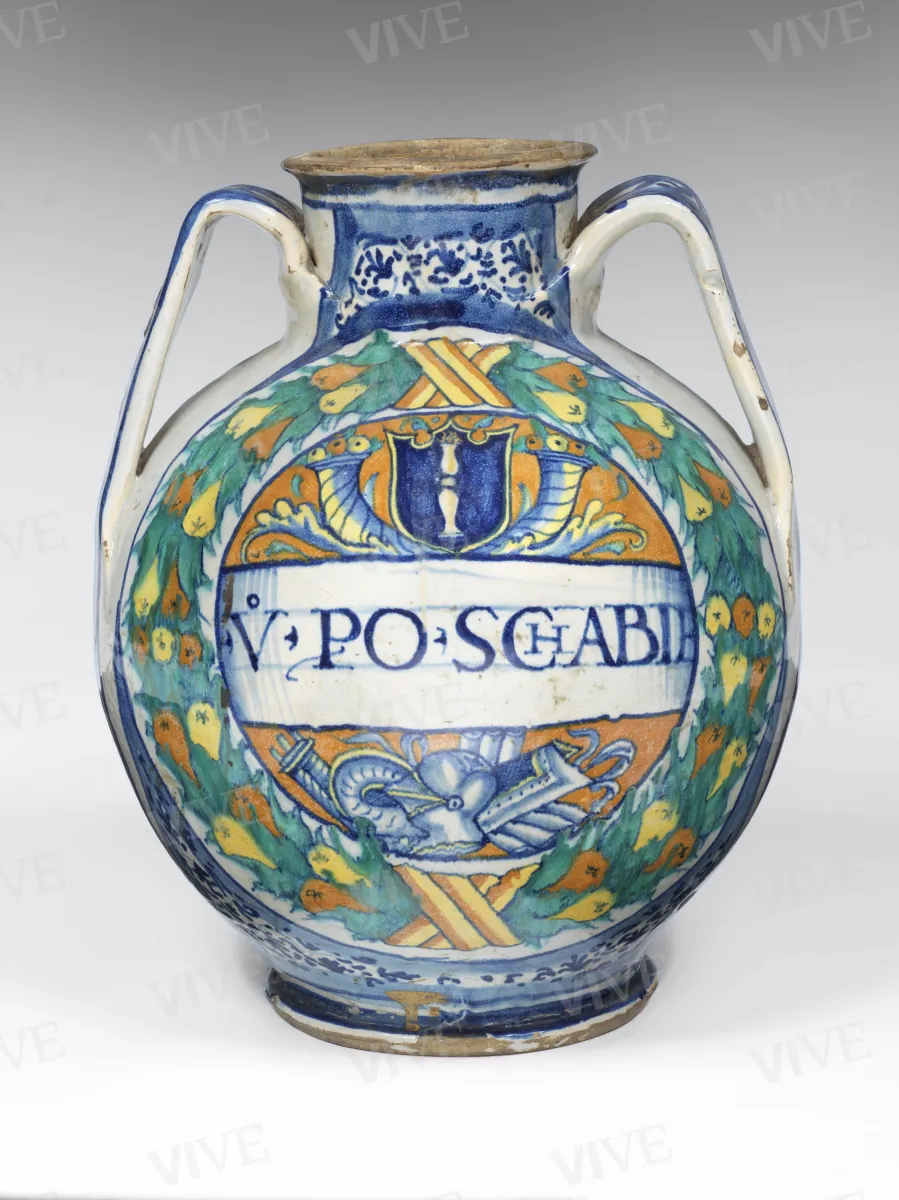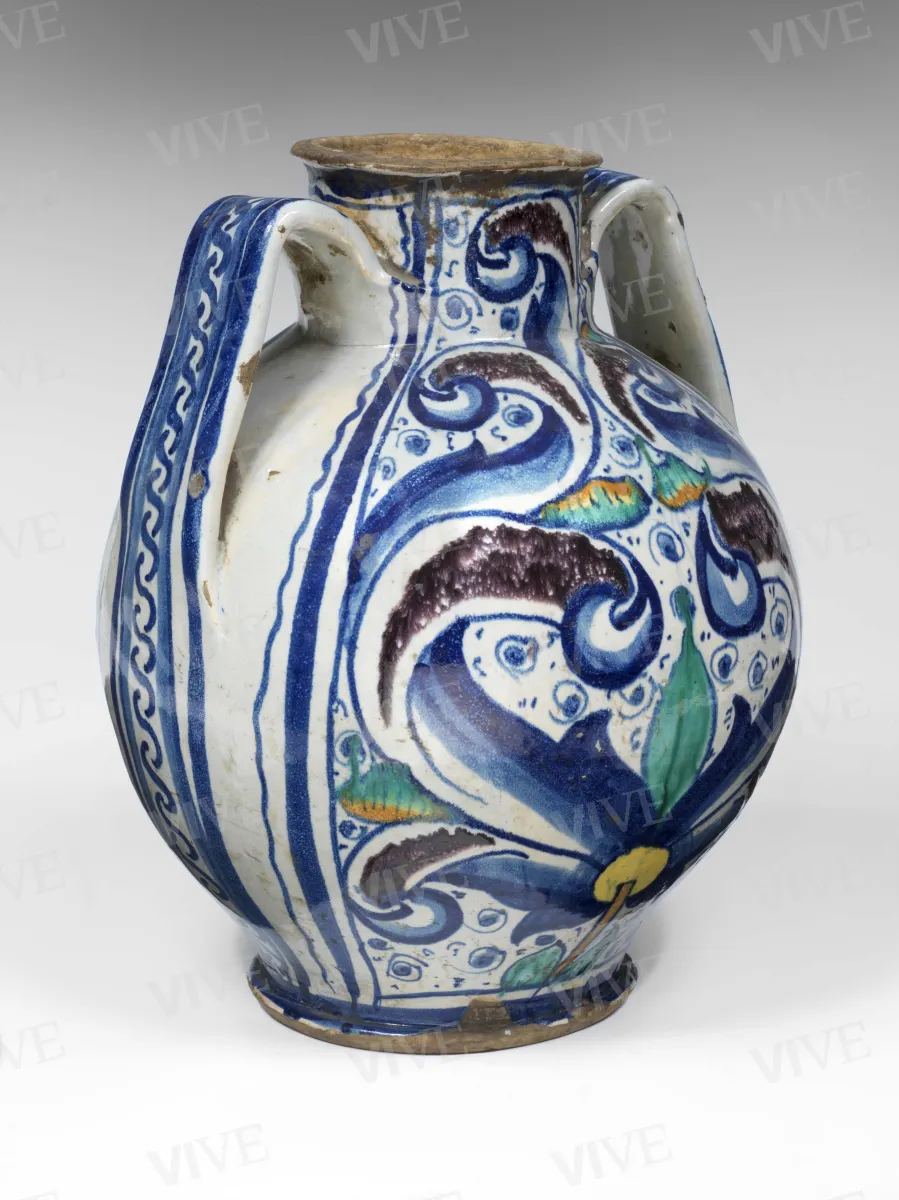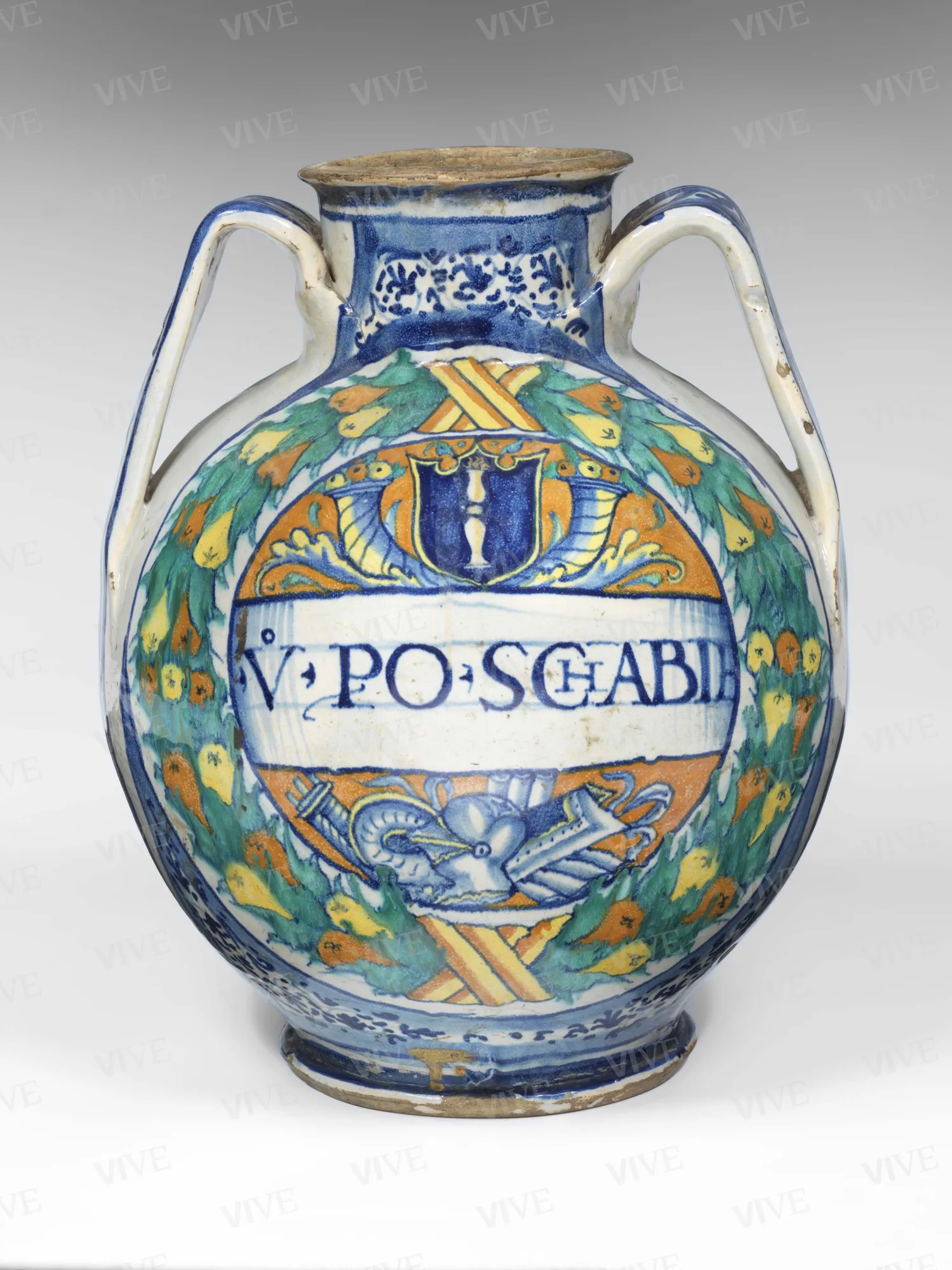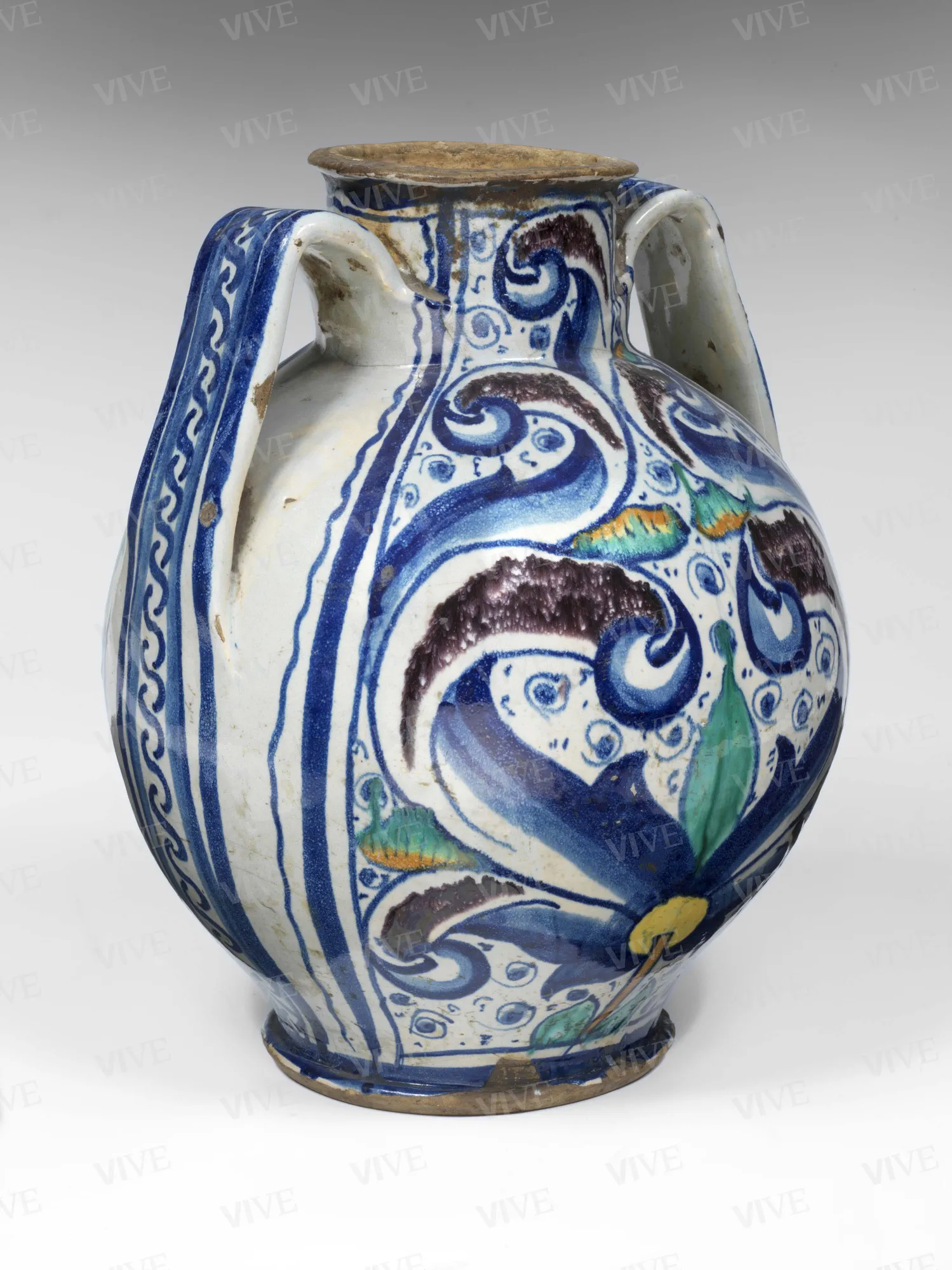Apothecary jar
Roman milieu 1490–1510
Polychrome majolica apothecary jar, decorated in blue, brown, green, yellow, and orange, from the pharmacy of Santissimo Salvatore ad Sancta Sanctorum.
Polychrome majolica apothecary jar, decorated in blue, brown, green, yellow, and orange, from the pharmacy of Santissimo Salvatore ad Sancta Sanctorum.
Details of work
Catalog entry
The small jar shares its shape and decoration with a container at the Museo Nazionale di Palazzo Venezia (inv. 9502). It features a globular body, a slightly flared disc-shaped foot, a high neck, an everted rim, and two opposite ribbon-shaped handles extending from the base of the neck to the widest part of the body.
The stanniferous-glaze coating features a palette of blue, brown, green, yellow, and orange for its decoration. The front of the item showcases a "porcelain" motif at the neck and foot areas, with a central festoon of fruit and flowers encircling a circular emblem bearing a scroll inscribed with “V[o]. P[ro]O. SCHABIE” (ointment for scabies). Positioned above the scroll is the insignia—a candelabrum designed to resemble a balustrade—representing the hospital of the Santissimo Salvatore ad Sancta Sanctorum. Beneath the cartouche, there are depictions of trophies with shields, helmets, and insignia. The reverse side displays an extensive "crumpled leaf" motif extending from the neck to the foot.
This piece, along with majolica piece inv. 9502, originates from the apothecary of Archiospedale del Santissimo Salvatore ad Sancta Sanctorum. After it was decommissioned, approximately ten containers from its stock were relocated to the administration offices of the Santo Spirito hospital, and subsequently to the storerooms of the Museo di Palazzo Venezia. Some of these containers were displayed at the Universal Exhibition in Rome in 1911 (cat. pp. 130–132).
In 1898, Fraschetti made a significant contribution regarding Roman apothecary jars (Fraschetti 1898, fig. 80), suggesting that these small jars should be attributed to workshops in Rome, contrary to prior and unsubstantiated claims that they originated from Cafaggiolo. Fraschetti supported his hypothesis with documents from the archives of the Ospedale del Salvatore, dating back to the early sixteenth century, which mentioned a supply of jars for the apothecary by a potter named Leonardo, who was of Tuscan origin and operated a workshop in Piazza Navona. This attribution was later affirmed by Otto Mazzucato in 1990, who referenced the same archival documents from the Hospital (Mazzucato 1990, pp. 46–47, n. 21).
Luca Pesante
Entry published on 27 March 2025
State of conservation
Good.
Inscriptions
“V[o]. P[ro]O. SCHABIE” (ointment for scabies).
Provenance
Rome, Apothecary attached to the Archiospedale del Santissimo Salvatore ad Sancta Sanctorum.
References
Fraschetti Stanislao, Vasi da farmacie romane fabbricati a Roma e non a Cafaggiolo, in «L'Arte», I, 1898, pp. VI-IX, fig. 80;
Mazzucato Otto (a cura di), Le ceramiche da Farmacia a Roma tra '400 e '600, catalogo della mostra (Roma, Palazzo Braschi, 30 marzo-6 maggio 1990), Viterbo 1990, pp. 46-47, n. 21.














